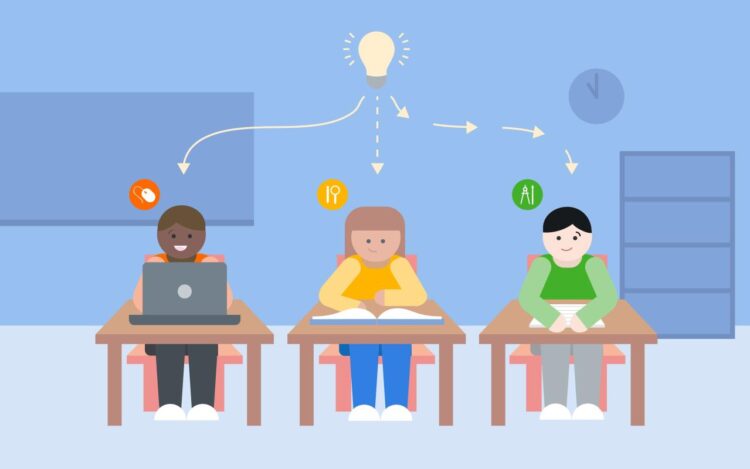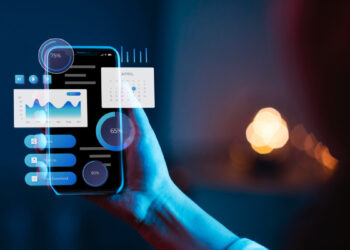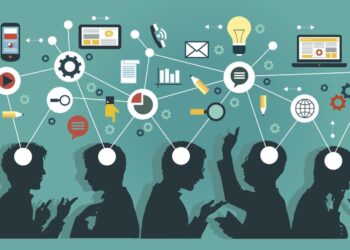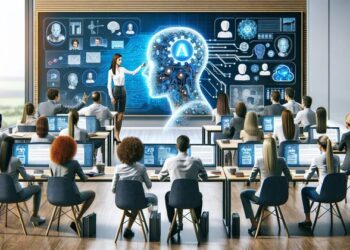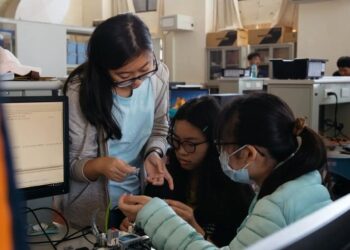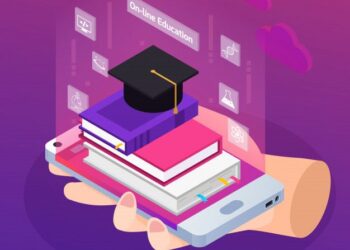The traditional, one-size-fits-all model of education, designed for industrial-era standardization, is increasingly showing its limitations in an age of unprecedented diversity in learning styles, abilities, and aspirations. A profound shift is underway, moving towards a student-centric paradigm where individual needs and preferences drive the educational experience. This transformative movement is encapsulated by the concept of personalized learning pathways, a revolutionary approach that tailors the curriculum, pace, and instructional methods to each student, promising to unlock their full potential and redefine the very essence of schooling.
The Vision of Personalized Learning
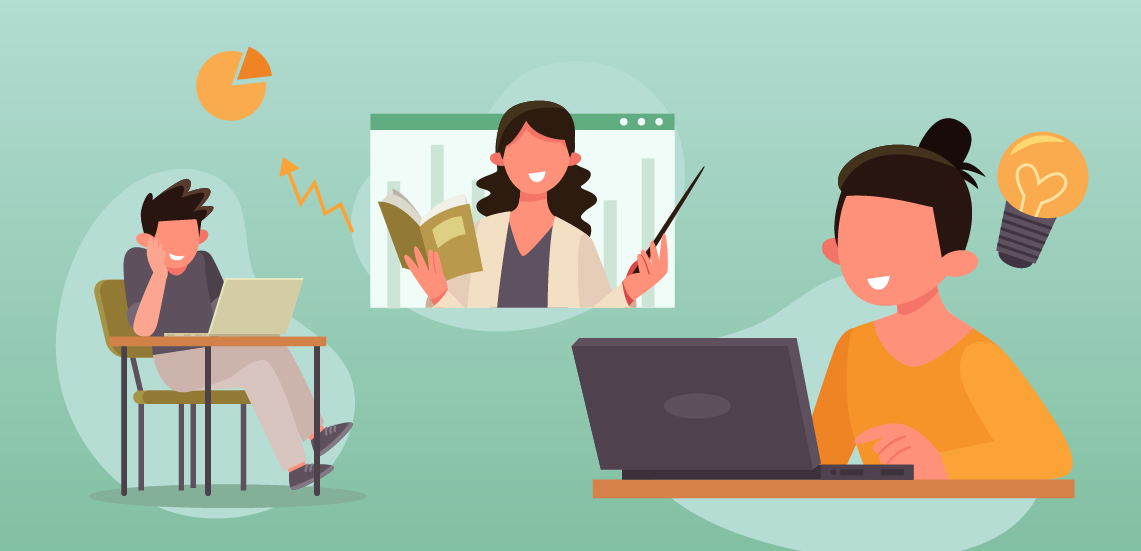
Personalized learning is far more than simply differentiating instruction; it’s a holistic philosophy that empowers students to take ownership of their education. It acknowledges that every learner is unique, with distinct strengths, weaknesses, interests, and prior knowledge. By leveraging technology, data, and flexible pedagogical approaches, personalized learning aims to create an educational experience that is truly relevant and engaging for each individual.
A. Core Tenets of Personalized Learning:
While implementation varies, several foundational principles define effective personalized learning environments.
- Student Ownership: At its heart, personalized learning is about shifting the locus of control to the student. Learners are actively involved in setting their own goals, making choices about their learning activities, and reflecting on their progress. This fosters self-direction and intrinsic motivation.
- Tailored Learning Paths: No two students follow the exact same trajectory. Content, learning activities, and resources are customized to match each student’s current understanding, learning style, and pace. This ensures that instruction is neither too easy nor too challenging, maintaining optimal engagement.
- Competency-Based Progression: Students advance based on demonstrated mastery of skills and concepts, rather than simply on seat time or age. This ensures a deep understanding of foundational knowledge before moving on, preventing gaps in learning.
- Flexible Learning Environments: Learning can occur anywhere, anytime. Personalized learning embraces diverse settings, from traditional classrooms and online platforms to real-world projects and community engagement, accommodating different learning preferences and schedules.
- Data-Driven Decisions: Ongoing assessment and data collection inform instructional decisions. Educators use real-time insights into student performance, engagement, and progress to adjust pathways, provide targeted support, and refine teaching strategies.
- Teacher as Facilitator: The role of the teacher evolves from a primary content deliverer to a guide, mentor, and coach. Teachers facilitate learning, provide individualized support, and curate resources, enabling students to navigate their personalized journeys effectively.
B. The Historical Evolution of Individualized Instruction:
The idea of tailoring education isn’t new; it has roots in various educational movements, but modern technology has brought it to fruition in unprecedented ways.
- Early 20th Century Pioneers: Educators like Maria Montessori and Helen Parkhurst (with the Dalton Plan) championed individualized work and self-paced learning, recognizing the limitations of uniform instruction. These early models, however, were labor-intensive and difficult to scale.
- Mid-20th Century Programmed Instruction: B.F. Skinner’s work on programmed instruction introduced the concept of immediate feedback and self-pacing through structured learning materials, often delivered via “teaching machines.” While influential, these lacked true adaptability.
- The Rise of Computer-Assisted Instruction (CAI): With the advent of computers in the latter half of the 20th century, CAI offered more interactive and adaptive learning experiences. However, early CAI systems were often simplistic and lacked the sophisticated data processing capabilities needed for deep personalization.
- The Digital Age and AI’s Impact: The explosion of digital content, robust learning management systems (LMS), and the transformative power of Artificial Intelligence (AI) have finally provided the technological infrastructure to make truly personalized learning scalable and effective. AI’s ability to analyze vast data, adapt content, and predict learning needs is a game-changer.
Transformative Impacts on Students and Educators
The shift to personalized pathways yields profound benefits for both learners and the professionals guiding them, creating a more dynamic and effective educational ecosystem.
A. Empowering Student Agency and Engagement:
When students have a voice and choice in their learning, their motivation and active participation soar.
- Increased Motivation and Engagement: Students are more engaged when they see the relevance of what they’re learning and have a say in how they learn it. Personalized content reduces boredom and frustration, as it’s neither too easy nor too difficult.
- Deeper Understanding and Retention: Learning at one’s own pace and through preferred modalities (visual, auditory, kinesthetic) leads to a more thorough grasp of concepts and improved long-term retention.
- Fostering Self-Regulation and Metacognition: Students learn to monitor their own progress, identify areas where they need help, and develop strategies for effective learning. This builds crucial metacognitive skills – “learning how to learn.”
- Developing a Growth Mindset: When learning is competency-based, students understand that mastery is achievable through effort and perseverance, rather than being fixed by innate ability. This promotes resilience and a belief in continuous improvement.
- Cultivating Critical Thinking and Problem Solving: Personalized pathways often integrate project-based learning and real-world challenges, requiring students to apply knowledge, think critically, and devise creative solutions.
B. Redefining the Teacher’s Role and Impact:
Far from diminishing the teacher’s importance, personalized learning elevates their role, making it more impactful and fulfilling.
- Targeted Intervention and Support: With detailed data on each student’s progress, teachers can identify struggling learners earlier and provide highly targeted, individualized support, rather than delivering generic lessons to the entire class.
- Focus on Mentorship and Coaching: Freed from the burden of delivering undifferentiated content, teachers can spend more time coaching students, facilitating small group discussions, fostering critical thinking, and addressing individual learning needs.
- Data-Informed Instruction: Teachers gain unprecedented insights into student learning patterns, allowing them to make more precise and effective instructional decisions, refining their pedagogy based on real-time feedback.
- Professional Development and Collaboration: As learning becomes more dynamic, teachers engage in continuous professional development, collaborating with peers to share best practices and innovate personalized approaches.
- Building Stronger Relationships: Personalized learning fosters deeper connections between teachers and students, as educators gain a more nuanced understanding of each student’s unique personality, strengths, and challenges.
C. Promoting Equity and Inclusivity:
Personalized learning holds immense promise for addressing educational inequities and ensuring every student has the opportunity to succeed.
- Meeting Diverse Needs: It allows for seamless differentiation for students with learning disabilities, gifted learners, English language learners, and those with varying socioeconomic backgrounds, ensuring that instruction is appropriate for everyone.
- Bridging Achievement Gaps: By providing targeted support and customized pathways, personalized learning can help close achievement gaps, ensuring that all students have the foundational skills they need to thrive.
- Accessibility to Resources: Technology-enabled personalized learning can provide access to a wealth of resources, including diverse content, assistive technologies, and expert instruction, regardless of a student’s geographic location or school resources.
- Culturally Responsive Pedagogy: Personalized approaches can be adapted to incorporate culturally relevant content and teaching methods, making learning more meaningful and relatable for students from diverse backgrounds.
Key Components and Enabling Technologies

The successful implementation of personalized learning relies on a robust combination of instructional design, flexible learning models, and advanced technological tools.
A. Instructional Design and Pedagogical Models:
Personalized learning isn’t just about software; it’s fundamentally about how learning is designed and delivered.
- Station Rotation: Students rotate between different learning stations within the classroom, including a teacher-led group, independent work (often digital), and collaborative activities. The content at each station is often personalized.
- Blended Learning: A combination of online learning and traditional face-to-face instruction. This allows for flexibility in pacing and content delivery while retaining the benefits of direct teacher interaction.
- Flex Model: Learners primarily work independently on digital content in a flexible, often redesigned classroom. Teachers are readily available to provide one-on-one or small group support as needed.
- Project-Based Learning (PBL): Students engage in extended, inquiry-based projects that allow them to explore topics deeply and apply skills in real-world contexts. Personalized learning often integrates PBL by allowing students to choose projects aligned with their interests.
- Individualized Learning Plans (ILPs): Formal or informal plans co-created by students, teachers, and sometimes parents, outlining specific learning goals, pathways, and progress metrics for each student.
B. Leveraging Educational Technology (EdTech):
Technology is the engine that drives scalable personalization, providing tools for content delivery, assessment, and data analysis.
- Learning Management Systems (LMS): Platforms like Canvas, Google Classroom, and Schoology are foundational, providing central hubs for content, assignments, communication, and basic progress tracking.
- Adaptive Learning Platforms: These AI-powered platforms dynamically adjust content difficulty and recommend resources based on a student’s real-time performance. Examples include Khan Academy, DreamBox Learning, and ALEKS.
- Assessment Tools: Digital assessment platforms provide immediate feedback, track mastery of specific skills, and generate data that informs personalized pathways. Formative assessments are key.
- Content Curation Tools: Platforms that allow educators to curate, organize, and share diverse learning resources (videos, articles, simulations) tailored to individual student needs.
- Data Analytics Dashboards: Tools that visualize student performance data, engagement metrics, and progress towards goals, providing teachers with actionable insights at a glance.
- Communication Platforms: Tools that facilitate seamless communication between students, teachers, and parents, supporting the collaborative nature of personalized learning.
C. The Role of Artificial Intelligence (AI) and Machine Learning (ML):
AI and ML are taking personalization to unprecedented levels, moving beyond simple adaptability to intelligent, predictive systems.
- Personalized Content Recommendation: AI algorithms analyze student data (performance, interests, learning style) to recommend highly relevant learning resources, exercises, and projects.
- Intelligent Tutoring Systems (ITS): AI-powered tutors can provide one-on-one, real-time feedback and support, addressing misconceptions and guiding students through complex problems as if they had a dedicated human tutor.
- Predictive Analytics: AI can identify students at risk of falling behind or disengaging, allowing for early intervention and targeted support before problems escalate.
- Automated Assessment and Feedback: AI can automate the grading of certain assignments (e.g., essays, coding exercises) and provide instant, granular feedback, freeing up teacher time.
- Dynamic Curriculum Adjustment: AI could, in the future, even dynamically adjust parts of the curriculum based on student cohort performance and evolving learning objectives.
Navigating Challenges and Ensuring Equitable Implementation
While the promise of personalized learning is vast, its widespread adoption faces significant hurdles that require thoughtful planning and strategic solutions.
A. Infrastructure and Resource Requirements:
Implementing personalized learning requires substantial investment in technology, professional development, and often, redesigned learning spaces.
- Access to Devices and Connectivity: Ensuring every student has a reliable device (laptop, tablet) and consistent internet access, both at school and at home, is a fundamental prerequisite. This addresses the digital divide.
- Robust IT Infrastructure: Schools need reliable Wi-Fi, sufficient bandwidth, and IT support to manage the increased reliance on digital tools and data.
- Funding and Equity: Securing adequate funding for technology, software licenses, and ongoing maintenance is critical, especially for under-resourced schools. Policies must ensure equitable access to these resources across all demographics.
B. Professional Development for Educators:
The shift to personalized learning demands a fundamental change in pedagogical approach, requiring extensive teacher training.
- New Roles and Skills: Teachers need training on how to use new technologies, interpret data dashboards, facilitate individualized learning, and manage a more dynamic classroom environment.
- Mindset Shift: Moving from a traditional teaching model to a facilitative and coaching role requires a significant mindset shift and ongoing professional learning communities.
- Time and Support: Teachers need dedicated time for planning, collaboration, and professional development to effectively design and implement personalized pathways.
C. Data Privacy and Ethical Considerations:
The reliance on student data in personalized learning raises critical concerns about privacy, security, and algorithmic bias.
- Data Governance: Clear policies and transparent practices for data collection, storage, use, and sharing are essential. Parents and students must understand how their data is being used.
- Algorithmic Bias: AI algorithms can perpetuate or amplify existing societal biases if not carefully designed and monitored. Educators must ensure that personalized pathways do not inadvertently disadvantage certain student groups.
- Human Oversight: While AI offers powerful tools, human oversight remains crucial to ensure ethical considerations are addressed, and that technology serves educational goals, not the other way around.
- Student Wellbeing: Over-reliance on data or algorithms should not overshadow the holistic development and emotional well-being of students.
D. Maintaining Social-Emotional Development:
A concern sometimes raised is that highly individualized learning might reduce opportunities for social interaction and collaborative skill development.
- Balanced Approach: Personalized learning should integrate opportunities for collaborative projects, group discussions, and peer-to-peer learning to ensure robust social-emotional development.
- Community Building: Teachers must actively foster a sense of classroom community and belonging, even as students pursue individual pathways.
- Developing Soft Skills: While academic skills are personalized, the development of communication, collaboration, and empathy should remain a central focus of the school environment.
The Future of Education
The trajectory of personalized learning is one of continuous evolution, driven by technological advancements and a deeper understanding of human cognition. It points towards an educational future that is inherently flexible, responsive, and deeply student-centered.
A. Learning Beyond the Classroom Walls:
Personalized pathways will increasingly blur the lines between formal schooling and real-world learning.
- Community-Based Learning: Personalized plans can incorporate apprenticeships, internships, volunteer work, and projects with local businesses or organizations, connecting learning directly to authentic experiences.
- Global Collaboration: Technology will facilitate personalized learning experiences that involve collaboration with peers and experts from across the globe, fostering a global mindset and intercultural competence.
- Micro-credentials and Skill Stacks: Instead of traditional degrees, personalized learning might lead to a system of micro-credentials, allowing individuals to build customized “skill stacks” that are highly relevant to specific career paths and can be continuously updated.
B. The AI-Human Symbiosis in Teaching:
The future will see a powerful partnership between human educators and AI systems, each complementing the other’s strengths.
- AI as a Personal Assistant for Teachers: AI can handle administrative tasks, provide data analytics, suggest resources, and even help design personalized lesson plans, freeing teachers to focus on high-impact instructional strategies and mentorship.
- Humans for Emotional Intelligence and Complex Problem Solving: Teachers will remain indispensable for fostering creativity, critical thinking, emotional intelligence, ethical reasoning, and navigating complex social dynamics – areas where AI currently falls short.
- Continuous Improvement Loops: The data generated by personalized learning systems, analyzed by AI, will provide ongoing feedback to educators, enabling a continuous improvement loop for teaching methodologies and curriculum design.
C. A Shift Towards Lifelong, Adaptive Learning:
Personalized learning is not just for K-12 or higher education; it lays the groundwork for a future where learning is a continuous, lifelong process.
- Adaptive Reskilling and Upskilling: As job markets evolve rapidly, personalized learning platforms will allow individuals to constantly reskill and upskill in bite-sized, relevant modules, maintaining their employability and career growth.
- Personal Learning Networks (PLNs): Individuals will curate their own personalized learning networks, drawing on AI-recommended resources, human mentors, and online communities to pursue their evolving learning goals.
- Learner-Driven Innovation: With greater agency and access to resources, students empowered by personalized learning will become proactive innovators, driving their own intellectual curiosity and shaping the future of knowledge.
Conclusion
The journey to fully realize the promise of personalized learning is ongoing, demanding vision, collaboration, and a willingness to embrace change. Yet, the potential for truly transformative education—one that meets every student where they are, nurtures their unique talents, and prepares them for an unpredictable future—makes this revolution in schools not just desirable, but essential.

